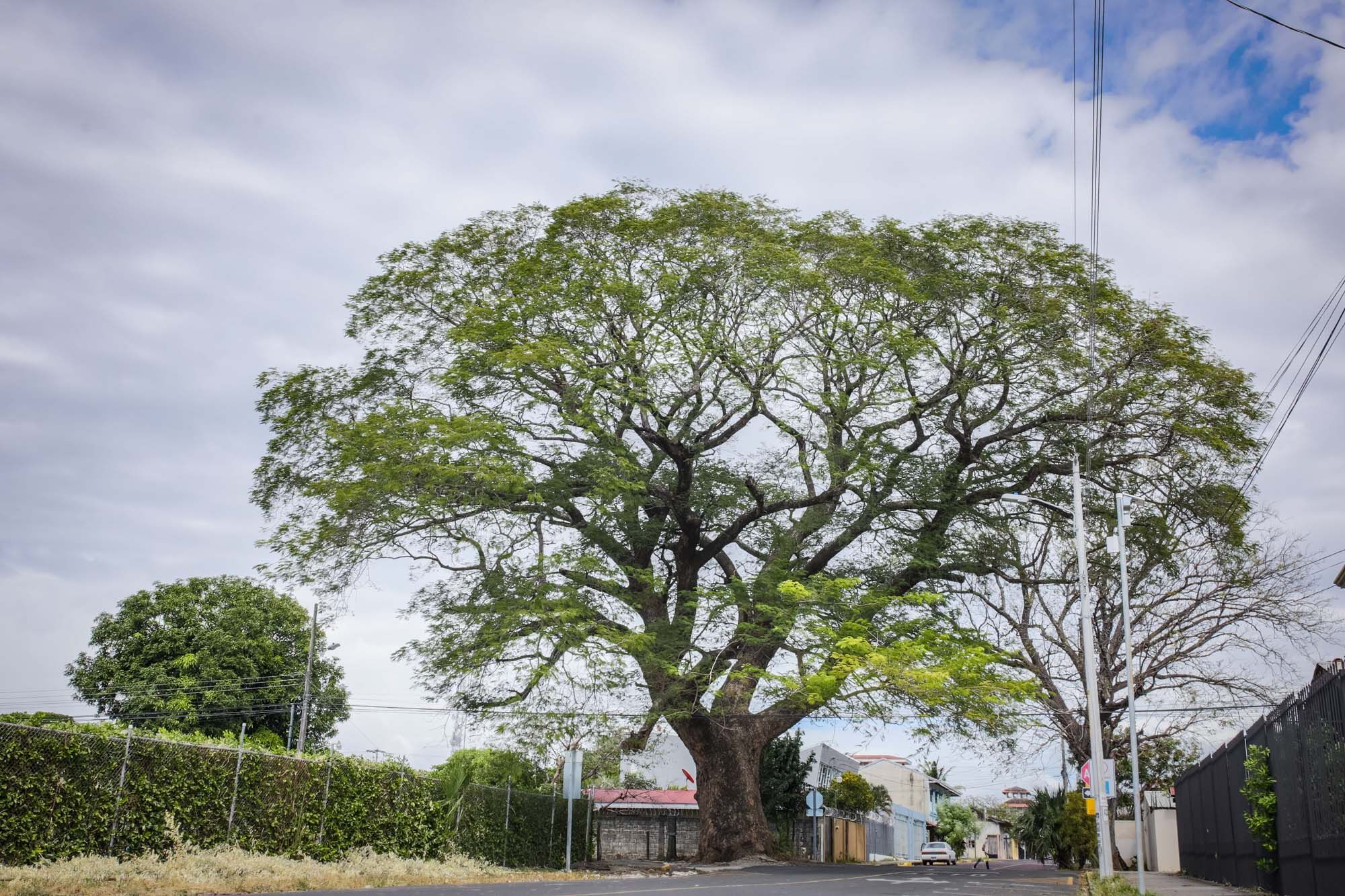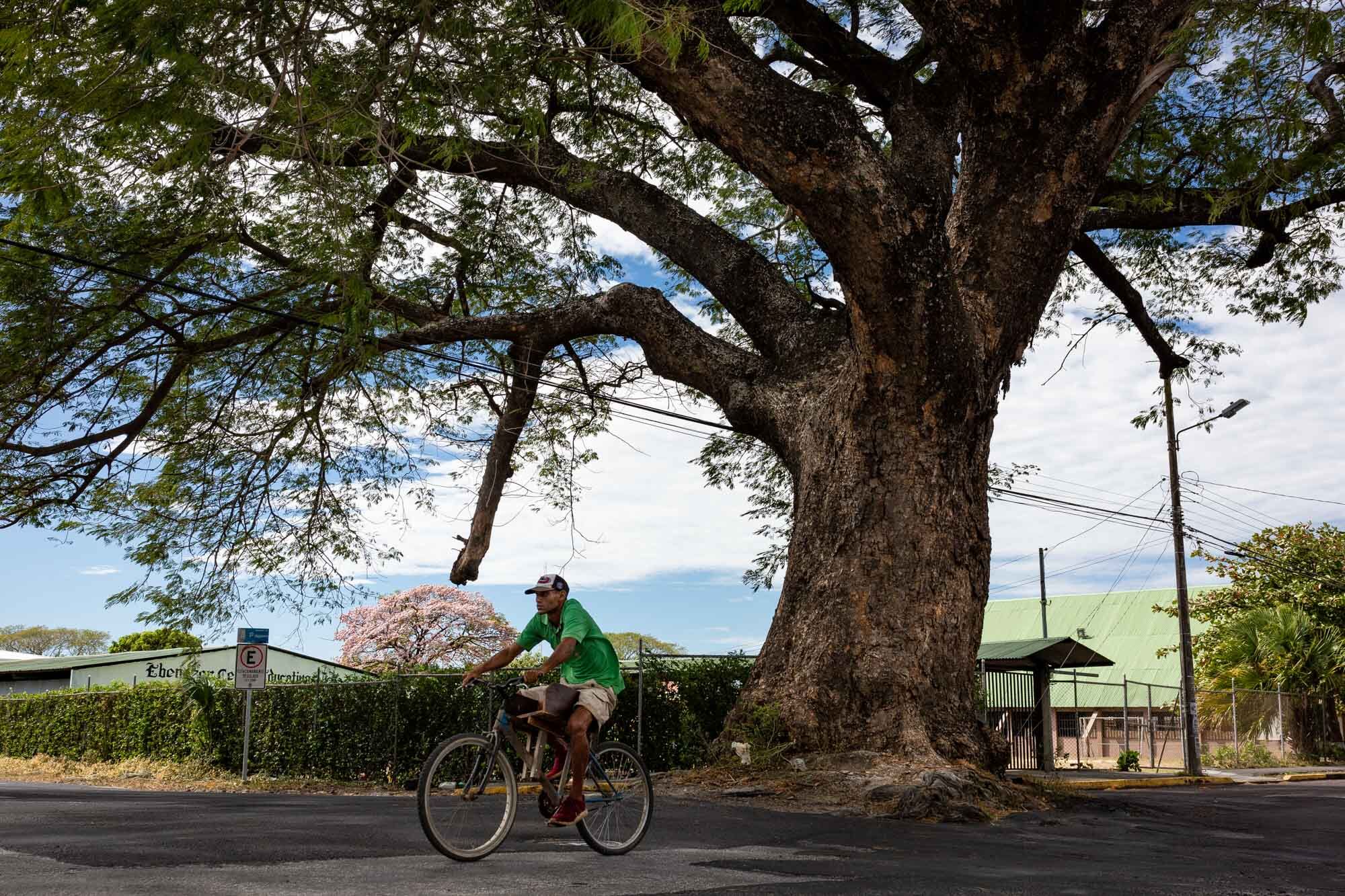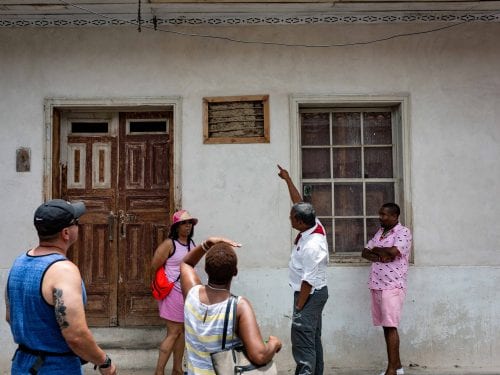
The branches above rooftops guide you to it. But in order to fully appreciate it, you have to stand back about 100 yards. It takes seven people holding hands to make a circle around its trunk.
Condega, a neighborhood in downtown Liberia, is its home and we visited it out of curiosity and because of recommendations. “Did you see the tree nearby that’s in the middle of the street,” residents told me several times.
This Guanacaste tree takes up an entire lane on the street that runs through town, making vehicles come to a complete stop to make sure there is no car coming around the other side of the tree and avoid a collision.
It sounds dangerous, but it only takes two minutes in its shade to understand that it doesn’t trouble anyone, as if it were the price Liberians are willing to pay in order to appreciate it.
Constructing its history for this story wasn’t an easy task. No one was able to recommend a single book about its past, so we had to rely on the memories of those who guard Liberian culture.
That’s how we arrived at the home of painter and culture scholar Jorge Sáenz. His house, with wooden walls and floors and a fire-burning stove, was the perfect spot to start our tour around Liberia via black and white photos.
Sáenz arrived in Liberia around 1950 and remembers seeing the same Guanacaste among pastures. Back then, the blocks we know today as streets and avenues didn’t exist, but he remembers that people spoke of a tree as one of the old entrances to downtown. At age 88, the painter figures the tree has been around 100 years. “It was a fully grown tree for as long as I can remember,” he says.
Member of the Liberia Cultural Association, Mélida Obando, 78, agrees with Sáenz about its age, and says the spot where the tree is used to be the Cecilio “Chilo” Castrillo Vásquez pasture. Born in Condega, Obando remembers “Chilo” lived in a two-story house and the tree was at the entrance to the farmyard.
That tree is a symbol. I was a teacher (in the 1960s) and I would take kids there to see the cows and how they are milked,” she says proudly of the neighborhood where she grew up.
Sáenz and Obando agree that when lots were divided up to build what we know today as the city, the tree stayed there and “no one dared to cut it down.”

The tree has been around 100 years.Photo: César Arroyo Castro
At Liberia City Hall, no one could provide us with a registry that showed the exact date the streets were built.
Lidia Ferrel, another member of the Cultural association, and Obando remember “for a while” the tree was at risk of being removed. As they recall, Condega had the streets defined as they are now.
At the time, the Salazar family – which still owns one of the homes near the tree – decided to protect it, association members say.
For a while, the tree had a placard on the trunk in recognition of Alfonso Salazar, who defended the tree,” Obando says. “The placard is gone now.”
Liberia mayor Julio Vales isn’t aware of any document or city council agreement protecting the tree from being cut down. The tree isn’t even protected by the National Heritage Society. The organization said the tree has not been declared a historic site under Law 7555 nor is there any historic research about it. It can’t be declared a “national heritage site” because it’s not a cultural manifestation as required by the 2003 Unesco Convention.
A Tree With Ears
“You plant yourself in the middle of the street like a symbol and a challenge.” These words are part of the poem “The Quauhnacaztli Sky” by Miguel Fajardo, inspired by the Guanacaste tree in Condega.
For the artist, the tree is still there after so many years and so many changes because Liberians see in the tree a way to reconnect with their roots. Before it was called Liberia, the canton was called Guanacaste for many years (from 1751 to 1854, approximately.)
“(Guanacaste trees) have been witness to fights against filibusters and the fearlessness of the Moracia battalion, led by Tomás Guardia, during the National Campaign (1856-1857). They hold, without obscurity, the 1915 invasion of the peninsula. These ears listen and hear, but they never forget,” Fajardo wrote for an article published in the website Guanacaste a la Altura.
“History says Liberia was born under the shade of the Guanacaste tree. It’s our story,” Sáenz said.







Comments